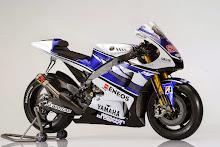Stroke (Brain Attack, TIA)
General information
A stroke happens when a vein that brings oxygen and supplements to the mind breaks or is stoped up by a blood coagulation or some different mass.
Without sufficient supply of oxygen, nerve cells of the mind can't work and pass on inside minutes. At the point when nerve cells can't work, the zone of the body they control can't work either.
TIA are transient ischemic assaults or smaller than usual strokes that happen when the lacking blood supply to the mind is recuperated after few minutes of an impediment of a vessel. They speak to cautioning indications of more genuine or lasting strokes.
Reasons for stroke and TIA incorporate meandering clumps (an embolus) from the heart, greasy developments (atherosclerotic sores) on the aortic curve or the vessels of the neck or mind, stenosis or narrowing of the corridors of the neck and the cerebrum or essential maladies influencing the courses of the focal sensory system known as vasculitis.
Infections connected with strokes incorporate diabetes, hypertension, elevated cholesterol, carotid malady, atrial fibrillation or other coronary illness, history of TIAs (scaled down strokes), sickle cell weakness, heftiness, fibromuscular dysplasia, connective tissue issue, other relatives with history of strokes.
Roughly 700,000 strokes happen in the United States yearly.
Symptoms
- Sudden numbness or weakness of the face, arm or leg, especially on one side of the body.
- Sudden confusion, difficulties speaking or understanding.
- Sudden loss of vision in one or both eyes.
- Sudden gait troubles, dizziness or loss of balance and or coordination.
Diagnosis
- MRI and CT scans can recognize the presence of strokes.
- MR-angiograms, CT-angiograms and Cerebral angiography provide complementary, important information regarding the location of the vessel occlusion, the degree of brain tissue affected, and the collateral circulation to the affected part of the brain.
Treatment
- The treatment of strokes requires rapid interventions including use of medications for dissolving clots or endovascular mechanical removal of the clot, and use of neuroprotectants and close critical care monitoring.
- Patients at risk of stroke or with TIA’s can be treated with medications to thin their blood, reduction of risk factors, and correction of the cause of the clots or vascular occlusion.
- Carotid stenosis can be treated with surgery to remove the fatty buildups or with applications of angioplasty and stents.
- Intracranial narrowing of the vessels can be treated with angioplasty and stenting or extracranial to intracranial bypass surgery
- Inadequate blood supply, due to diseases like moyamoya, is treated with revascularization techniques including bypass surgery and EDAS.







0 comments:
Post a Comment